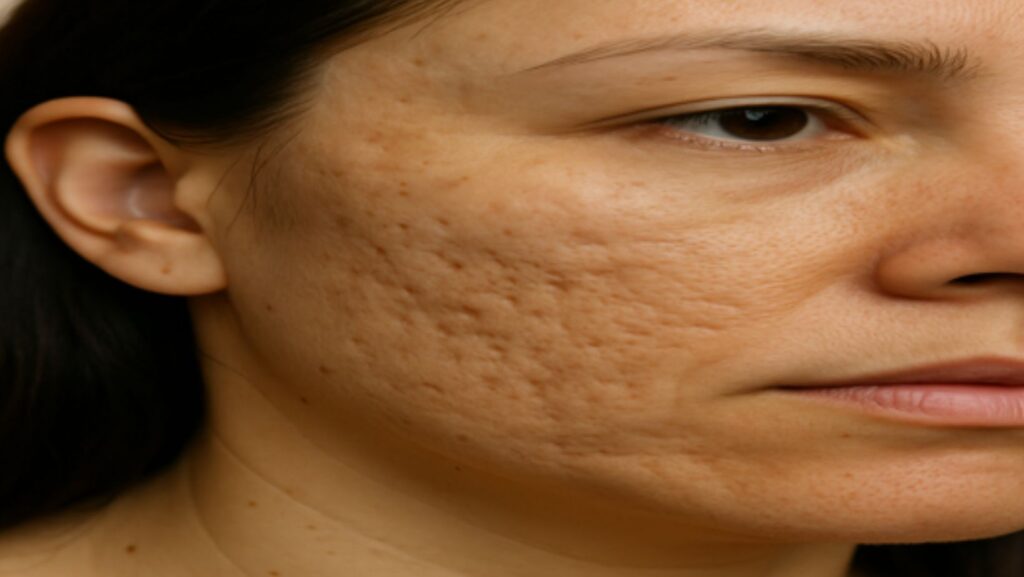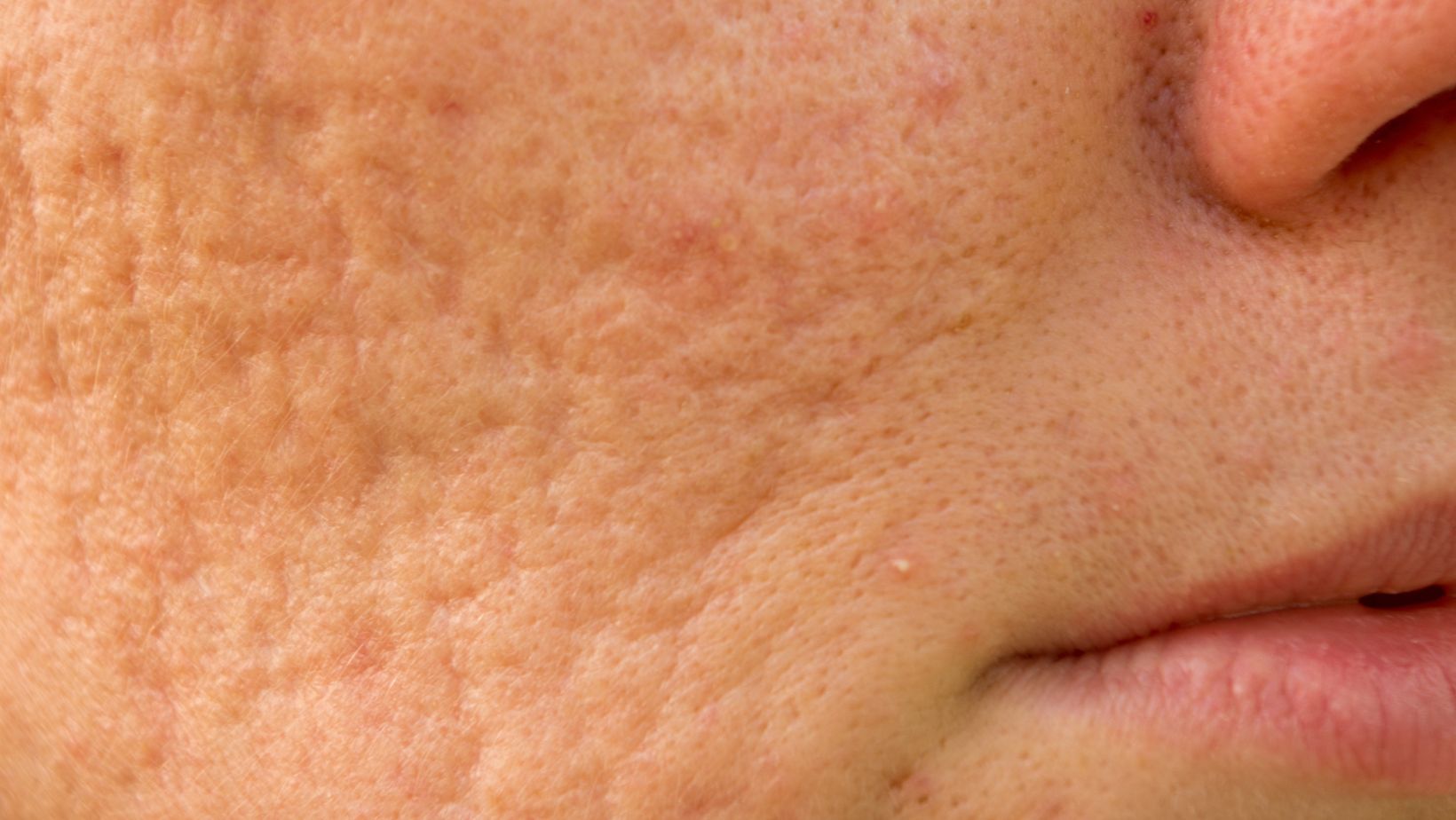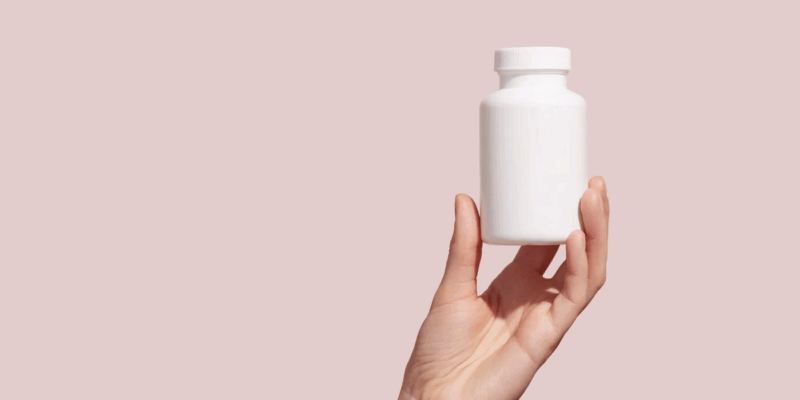
Introduction
Not all scars heal flat. For many people, especially those recovering from acne or skin trauma, the lasting issue isn’t the wound — it’s the hollowed-out scar left behind. These are known as atrophic scars, and collagen sits at the centre of why they form.
Often treated like a beauty buzzword, collagen is actually the structural protein responsible for skin strength and resilience. When the body doesn’t produce enough during wound healing, the skin can’t rebuild itself fully — and the result is that characteristic sunken appearance.
In medical aesthetics, understanding how collagen functions beneath the surface isn’t optional — it’s essential. Because when we grasp the “why” behind scar formation, we can better guide the “how” of treatment and recovery.
What Is Collagen?
Collagen is the most abundant protein in the human body, accounting for roughly 30% of total protein content and about 70-80% of the skin’s dry weight. Within the skin, it serves as a structural framework — giving it strength, firmness, and elasticity.
There are over two dozen types of collagen, but Type I and Type III are the most relevant to skin health. Type I collagen provides tensile strength and durability, while Type III supports the skin during early stages of repair, particularly after injury.
Collagen is synthesised by fibroblasts — specialised cells within the dermis. When the skin is damaged, these fibroblasts are activated to produce new collagen and rebuild the extracellular matrix.
However, collagen production is not guaranteed. It naturally declines with age, slows in response to chronic inflammation, and is easily disrupted by poor nutrition, UV exposure, and certain lifestyle choices.
Collagen and Wound Healing
Wound healing is not a single event but a sequence of tightly regulated phases: haemostasis, inflammation, proliferation, and remodelling. Collagen plays a central role in each of these — particularly in the latter two phases, where tissue repair and restructuring occur.
During the proliferation phase, fibroblasts migrate into the wound site and begin synthesising Type III collagen to form granulation tissue — the early framework of new skin. This provisional collagen helps pull the wound edges together and acts as a scaffold for new cells and blood vessels.
As healing progresses into the remodelling phase, the initial Type III collagen is gradually replaced by Type I collagen, which is stronger and more durable. This phase can last for weeks to months, depending on the depth and nature of the wound. The success of this transition is what ultimately determines whether a scar forms — and what kind of scar it will be.
When collagen synthesis and deposition are well-balanced, the result is typically a flat or nearly invisible scar. But if the process is disrupted — due to inflammation, infection, or insufficient collagen production — the skin may fail to rebuild fully, leaving behind depressions characteristic of atrophic scars.
Collagen Deficiency and Atrophic Scars
When collagen is not produced in adequate amounts, it leads to the formation of atrophic scars. These scars occur when the skin fails to regenerate fully after inflammation or trauma, leaving behind depressions due to loss of underlying tissue.

They’re typically classified into three types:
| Scar Type | Description | Typical Shape |
| Ice Pick Scars | Narrow, deep scars often from severe acne | V-shaped, sharply defined |
| Boxcar Scars | Wider, with sharp edges | U-shaped, flat-bottomed |
| Rolling Scars | Soft, shallow indentations | Wavy or undulating |
Each type reflects a different pattern of collagen failure below the skin’s surface. Repeated trauma, inflammation, or delayed healing can all disrupt fibroblast function — making it harder for the skin to rebuild lost volume. Without clinical support, these scars rarely resolve on their own.
Lifestyle Factors Affecting Collagen
While genetics and age play a role in how much collagen your body produces, lifestyle factors often have a much greater day-to-day impact — especially when it comes to skin health and scar recovery.
Here are some of the most common (and preventable) lifestyle factors that impair collagen production:
1. UV Exposure
Ultraviolet (UV) radiation is one of the most aggressive external stressors on collagen. It penetrates the skin and triggers collagenase, an enzyme that breaks down collagen fibres.
Over time, this leads to thinning skin, premature ageing, and a diminished ability to repair damage — making atrophic scars more likely and more visible.
2. Poor Nutrition
Collagen synthesis relies on a steady supply of nutrients like vitamin C, zinc, proline, and glycine. Diets low in protein or rich in processed foods can deprive the body of these raw materials. Without them, fibroblasts simply can’t do their job effectively during wound healing.
3. Smoking
Nicotine and other toxins in cigarettes reduce blood flow to the skin and deplete oxygen levels — both of which are essential for collagen production. Studies consistently show that smokers have thinner skin, delayed wound healing, and a higher risk of developing severe scarring after acne or surgical procedures.
4. Chronic Stress
Stress elevates cortisol levels, which can inhibit fibroblast activity and slow tissue regeneration. While the impact may not be immediate, sustained stress creates a hormonal environment that impairs collagen turnover and skin renewal over time.
5. Lack of Sleep
During deep sleep, the body enters repair mode — producing growth hormones and stimulating tissue regeneration. Chronic sleep deprivation interrupts this cycle, leaving less time for collagen rebuilding and skin recovery.
Even when patients invest in treatments like microneedling, lasers, or peels, these lifestyle factors can work against them. Addressing these habits is often the first step in restoring the skin’s ability to heal properly and minimising future atrophic scarring.
Supporting Collagen Production
Once collagen deficiency is identified as a root cause of atrophic scarring, the next logical step is finding ways to stimulate and support its production — both internally and externally.
Fortunately, modern cosmetic dermatology offers a wide range of strategies that work with the body, rather than just on the surface.
Here’s how patients and practitioners can enhance collagen synthesis and improve scar outcomes:
1. Professional Treatments That Stimulate Collagen
Many evidence-based aesthetic treatments are specifically designed to trigger the skin’s natural repair response — encouraging fibroblasts to lay down fresh collagen. Some of the most effective include:
| Treatment | How It Works | Effectiveness on Atrophic Scars |
| Microneedling | Creates controlled micro-injuries to induce collagen regeneration | Excellent for shallow scars |
| Fractional Laser (CO₂ / Er:YAG) | Ablates targeted areas of skin to promote collagen remodelling | Effective for moderate to deep scars |
| Radiofrequency (RF) | Heats dermal layers to stimulate fibroblast activity | Great for improving skin texture |
| PRP (Platelet-Rich Plasma) | Injects growth factors that accelerate healing and collagen repair | Enhances other treatments synergistically |
The choice of treatment depends on scar type, skin tone, and patient goals — but nearly all effective scar therapies work by activating collagen renewal.
2. Topical and Supplement Support
While in-office treatments drive the most dramatic results, daily support matters too. Consider these tools:
- Topicals with Retinoids: These increase collagen production by accelerating cell turnover and stimulating fibroblasts.
- Vitamin C Serums: Vitamin C is essential for collagen synthesis and also protects existing collagen from oxidative damage.
- Hydrolysed Collagen Supplements: Oral collagen peptides — particularly those derived from marine or bovine sources — may improve skin elasticity and hydration, according to recent studies.
3. Nutritional Foundations
Encouraging collagen production from within starts with basic nutritional support. Patients should ensure their diet includes:
- Protein (for amino acids like glycine and proline)
- Vitamin C (citrus, berries, capsicum)
- Zinc (seafood, legumes)
- Copper (nuts, seeds, leafy greens)
Without these nutrients, even the best treatments will underperform.
Collagen restoration is not a quick fix — it’s a process. But when patients combine the right treatments with internal support, they often see meaningful improvements not just in their scars, but in overall skin quality and resilience.
Conclusion
Atrophic scars form when the skin can’t produce enough collagen to fully repair itself — leaving behind depressions that reflect deeper healing failures.
For professionals in cosmetic dermatology, collagen is more than a buzzword; it’s the foundation of effective scar treatment. And for patients, understanding how lifestyle, nutrition, and treatments influence collagen can empower better long-term outcomes.
In the end, improving scars means improving how the skin heals — and that starts with collagen.












